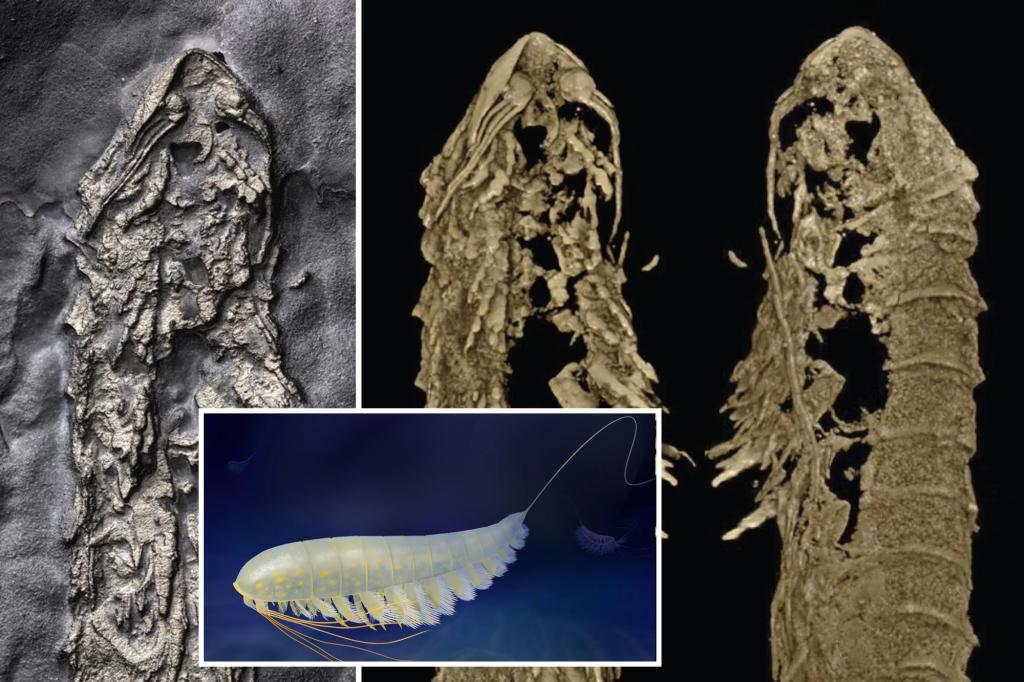A 450-million-year-old fossil of an ancient creature related to spiders was discovered encased in fool’s gold in upstate New York. The new species, called lomankus edgecombei, belongs to a group of arthropods known as megacheirans and has a unique single modified leg at the front of its body for capturing prey. Despite its relation to arachnids like horseshoe crabs and scorpions, the lomankus edgecombei looks very different from modern-day spiders. The fossilization process in a low-oxygen environment allowed for fool’s gold to replace parts of its body, creating a stunning gold 3D fossil.
The megacheiran fossil was found in upstate New York at the Beecher’s Trilobite Bed by a research team led by the University of Oxford. The fossil was entirely preserved in fool’s gold, creating a lifelike 3D model of the ancient creature. The exceptional preservation of the fossil has provided scientists with valuable information about the species, shedding light on its unique features and adaptations. The discovery has been described as ‘spectacularly preserved’ with the lomankus edgecombei castings looking as if they could come to life and ‘scuttle away’.
The head of the lomankus edgecombei creature and its appendages have been described as highly adaptable, able to overcome various challenges similar to a biological Swiss army knife. The unique features of the ancient creature, such as its golden color, whip-like hairs, and modified front leg, offer insights into its behavior and evolution. The scientists at the University of Oxford believe that the discovery of the fossil can help in understanding how arthropods evolved the modified leg found on the lomankus edgecombei’s head and its significance to modern-day arachnids.
The discovery of the lomankus edgecombei fossil has been celebrated by experts in the field as it provides a clearer explanation of how arthropods, including spiders and scorpions, evolved over millions of years. The similarities and differences in features between the new find and other arachnids can help in understanding the evolutionary history of these fascinating creatures. The presence of whip-like hairs on the creature suggests that it may have used its front leg to sense the environment, similar to how insects rely on their antennas for navigation and communication.
The 3D fossil of the lomankus edgecombei has been described as striking and beautifully preserved, showcasing its unique characteristics that set it apart from other arachnids. The discovery sheds light on a species that lived in a challenging environment with limited oxygen, leading to the fossilization of fool’s gold within its body. The detailed findings of the research team at the University of Oxford have been published in ScienceDirect, providing a comprehensive analysis of the ancient creature and its significance in the evolutionary history of arthropods.













